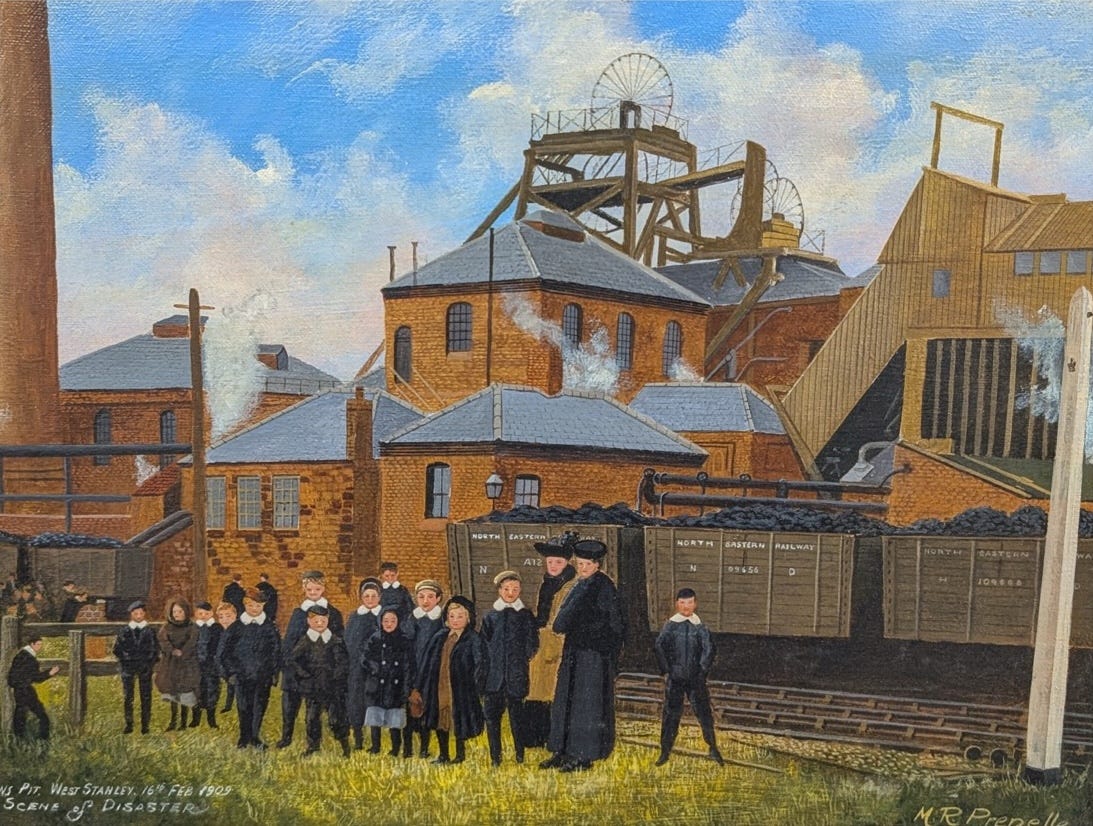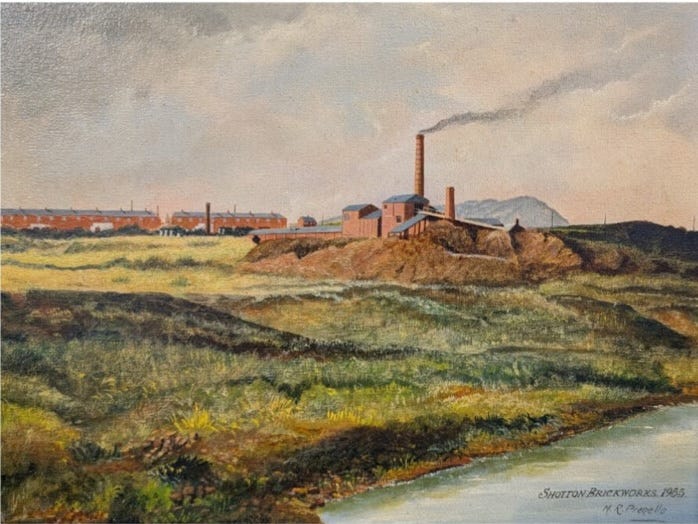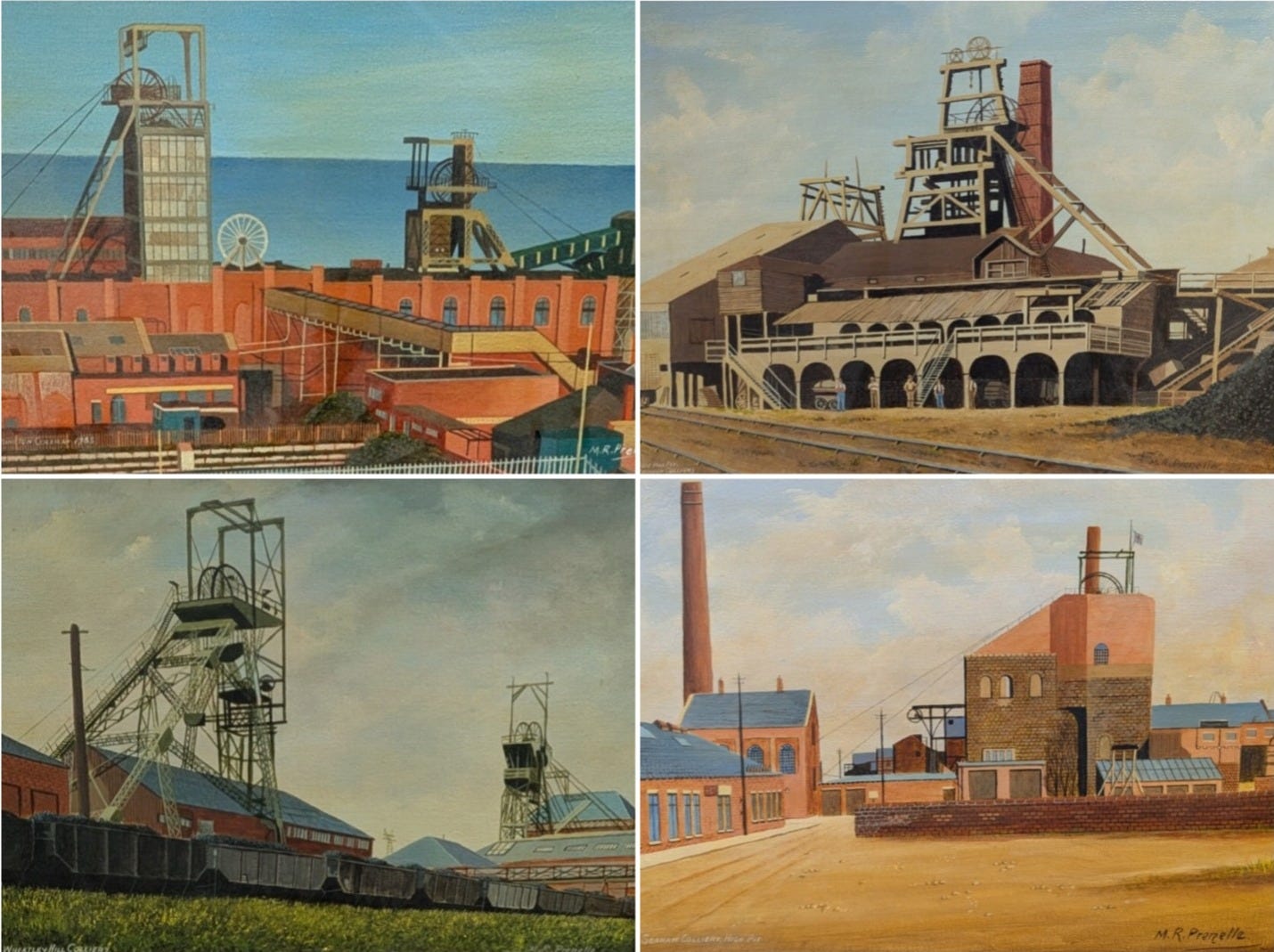Colliery paintings capture Durham’s lost pits
Paintings which depict County Durham’s colliery past are sold. Tony Henderson reports
Twenty paintings of County Durham collieries by a little-known artist have become a valuable historical portrayal of a now-lost mining landscape.
The detailed images of the pits by Michael Ronald Prenelle are thought to have been created in the 1950s–70s.
The paintings have come to light in a sale by Boldon Auction Galleries, where they fetched a total of £680.
In 1947, when the coal industry was nationalised, there were 234 collieries in County Durham with their surrounding pit villages.
In 1913, at the Durham Coalfield’s peak of production, 170,000 miners worked in the pits. The last deep mine in the coalfield, Wearmouth Colliery in Sunderland, closed in 1993.
“These paintings are now an important social document,” said Boldon auctioneer Giles Hodges.
“All of these were painted by local artist Michael Ronald Prenelle and depict a subject matter that generations of families around the North East can relate to on a very personal level.
“From our understanding, the original owner of these paintings had them commissioned after making conversation with the artist at a local working men’s club.
“Prenelle has painted the collieries with great attention to detail. His works have appeared in auctions around the North East, and the mining examples depict a variety of notable pit heads and collieries, which are survived by the small communities that they once served.”
One of the paintings depicts Burns Pit at the West Stanley Colliery in County Durham, where on February 16, 1909, 168 men and boys lost their lives in an explosion.
In 1995, Kevin Keegan unveiled a memorial to the lost miners. His grandfather, Frank Keegan, was one of those who joined in rescue attempts after the disaster.
“It is the only painting within this collection that arguably illustrates a view of the workers themselves. It presents an interesting insight into the social history of our region,” said Mr Hodges.
“In this painting, the artist depicts a crowd of young and older workers standing before a row of coal wagons and the colliery itself.
“In the corner of this painting the artist makes reference to the 1909 disaster, which epitomises just how perilous the mining industry was throughout the late 19th and 20th centuries.
“Other collieries and pit heads which feature in this collection include those at South Hetton, Easington and Boldon. These three collieries closed in the 1980s and 1990s, only a generation or so ago, and it is apparent just how big a part these communities were in their day and how many memories they generate.”




